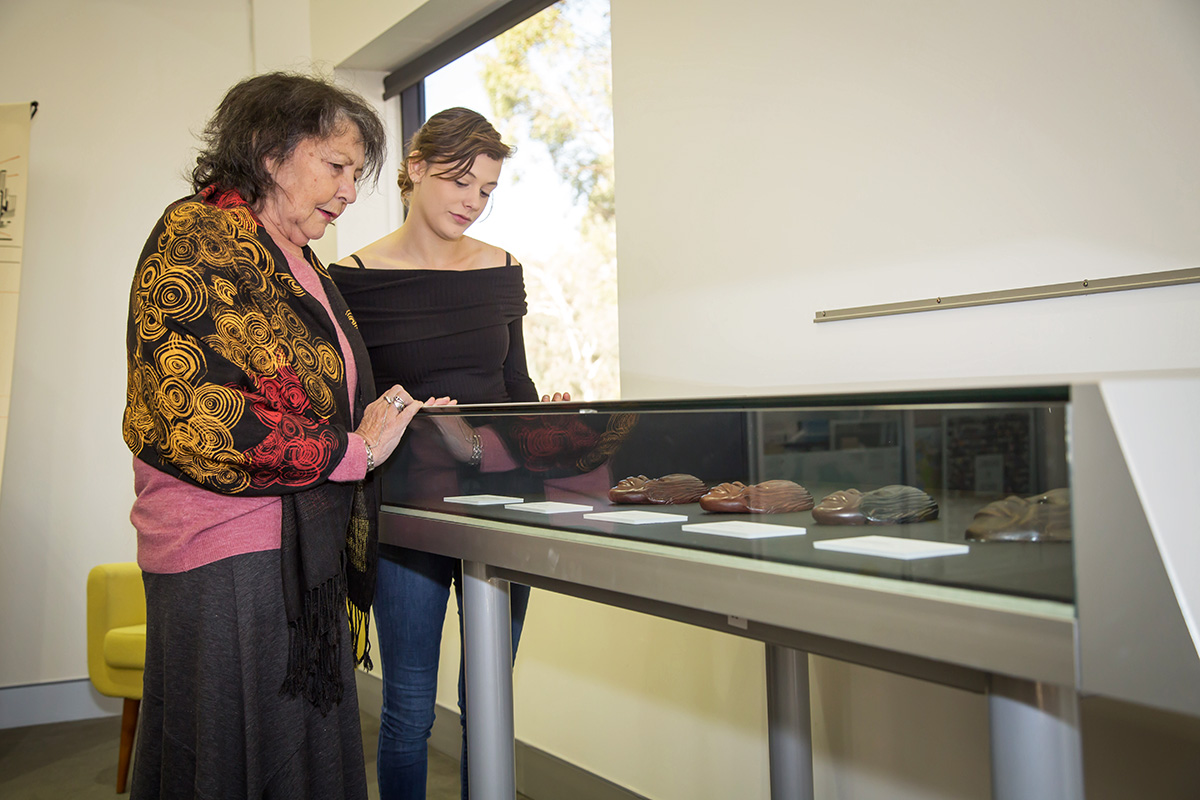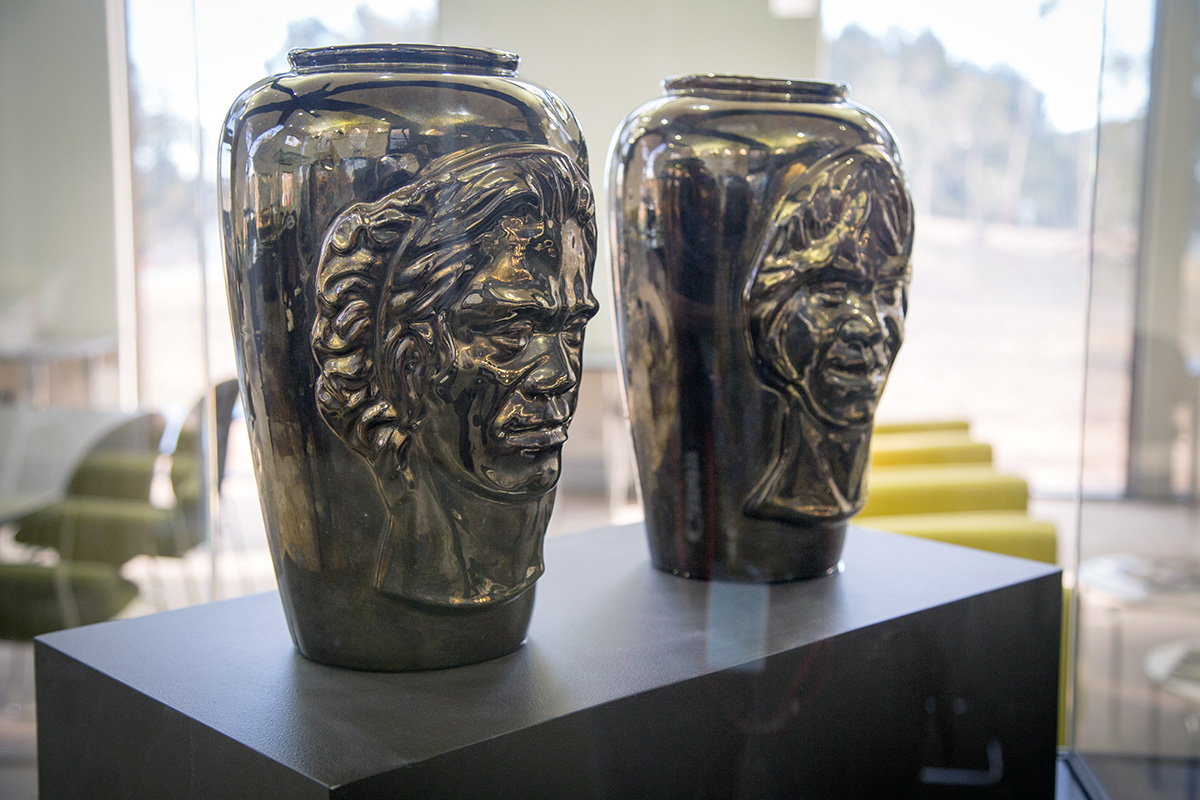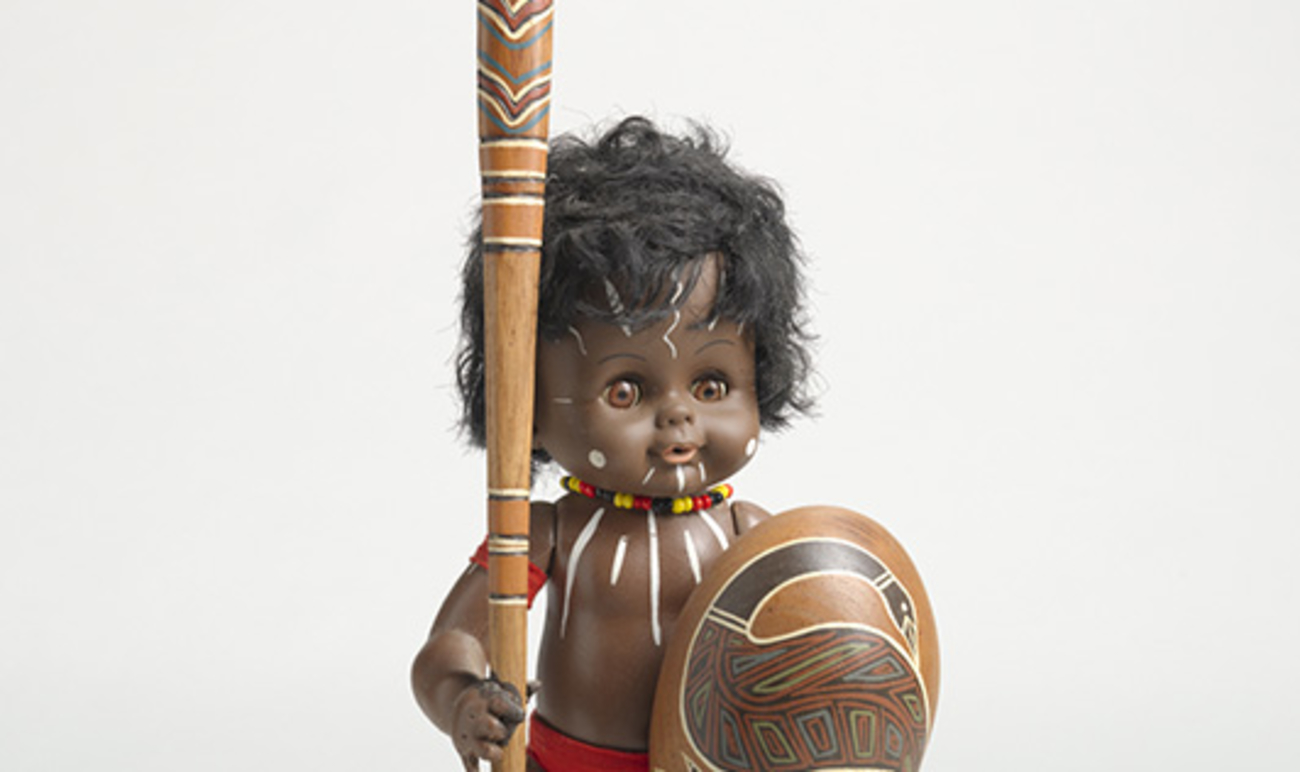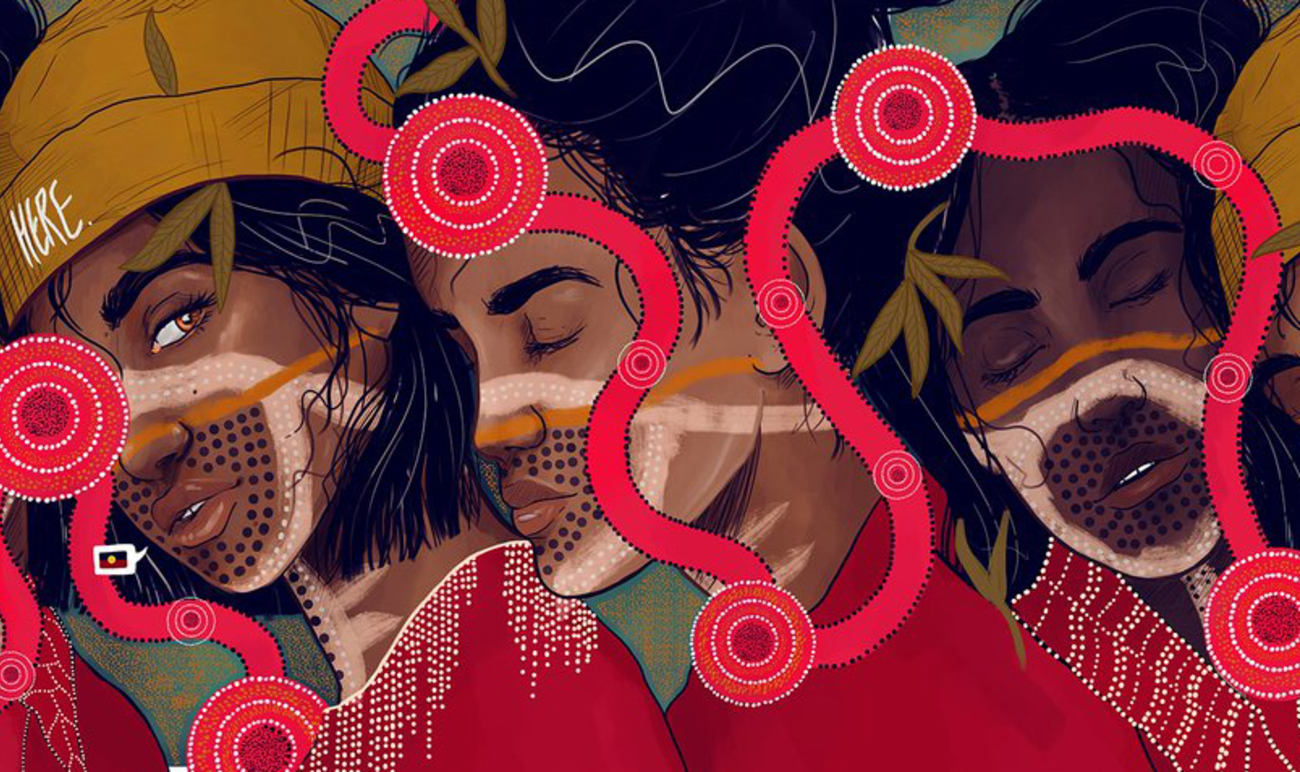Kerry Reed-Gilbert is a Wiradjuri elder, poet, writer, activist, artist and photographer living in Canberra. In 2016, AIATSIS acquired her extensive collection of decorative domestic items that depict Aboriginal people or use Aboriginal motifs. The collection includes plates, figurines, badges, ashtrays, prints, and velvet paintings. Accumulated over decades, Reed-Gilbert holds a deep affection for the Aboriginal people represented in these objects. A new display in the AIATSIS Reading Room shares Reed-Gilbert’s collection, which decorated many Australian homes during the 20th-century.
I looked at all the beautiful items out there in relation to what people call ‘Aboriginalia’ and I don’t know if people were truly seeing the beauty of it. I collected these items because I wanted to capture that beauty.
Reed-Gilbert began her collection in the 1970s with two Brownie Downing prints gifted from her mother. Brownie Downing (1924 – 1995) was a 20th-century Australian artist most well known for her illustrations of Aboriginal children, which have appeared in books, ceramic plates, ashtrays and other decorative objects. The display includes a selection of Downing ceramics as well as painted cast portraits of men and women, Wembley Ware ash trays featuring Aboriginal stockmen, and unique vases made especially for Reed-Gilbert.
Where others see racialised stereotypes, Reed-Gilbert sees beauty, strength and pride in the people depicted in her collection. She says:
I acknowledge the era that these objects come from, I acknowledge the events that were happening in Australia, I acknowledge the targeting of Aboriginal people for tourism, but they are still our cultural objects.
They were not intended to be Aboriginal people’s cultural objects, they were intended to be an object for non-Aboriginal people by way of a tourist item. Instead at the end of their journey they have become an item of happiness, pride, pleasure, beauty, and ownership for us as a people. What a journey for them and us.

Kerry Reed-Gilbert with her granddaughter Kaylarnie, looking over the display of her collection in the AIATSIS Reading Room, 2018. Photo: Andrew Turner.
Kerry Reed-Gilbert with her granddaughter Kaylarnie, looking over the display of her collection in the AIATSIS Reading Room, 2018. Photo: Andrew Turner.
Read more about Kerry Reed-Gilbert’s collection in A response to ‘Aboriginalia' and the politics of Aboriginal kitsch.
Information about visiting the AIATSIS Reading Room can be found here.
Further reading
Reed-Gilbert, K. 2002. Talkin about country. Watson, ACT: Kuracca Communications.
Franklin, Adrian. 2010. ‘Aboriginalia: souvenir wares and the "aboriginalization" of Australian identity’, Tourist Studies, vol.10 no.3.
Brand, S. 2018. ‘Aboriginalia: Conversations and connections’. Tony Albert: Visible. Brisbane, Qld: Queensland Art Gallery – Gallery of Modern Art.




